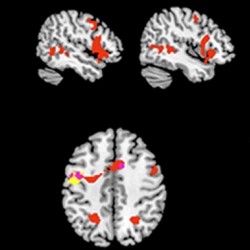By Helen Figueira
January 17, 2011
Time to read: 3 minutes
 Cognitive Neuroimaging: Theories of reading
Cognitive Neuroimaging: Theories of reading
‘When he read, his eyes scanned the page and his heart sought out the meaning, but his voice was silent and his tongue was still,’ noted Saint Augustine of Hippo in 383 AD as he described Ambrose, then Bishop of Milan. Fifteen centuries later, French ophthalmologist Émile Javal – who used a mirror on to observe eye movement during silent reading – coined the term saccade to describe the very fast eye movements characteristic to this everyday process.
Reading may be a basic skill, but it is an incredibly complex cognitive feat, which most of us take for granted. The interaction between the text and the reader is shaped by the reader’s prior knowledge, experience, attitude and cultural context. Reading requires continuous practice and refinement. And scientists today are still trying to reach a consensus on just how the brain masters the art.
The jury is still out, although recent research published in the Journal of Neuroscience by Richard Wise and his team at the MRC Clinical Sciences Centre (Imperial College London) adds another piece to the puzzle. “Cognitive scientists who study reading are broadly divided into ‘localists’ and ‘connectionists’,” he explains. “The debate now focuses on the role of a cortical region known as the visual word form area (VWFA).”
“Without an intact VWFA reading is not possible,” says Richard. “Localists would argue that it stores representations of words, but connectionists see it as an interface that bridges the brain areas involved in vision and language to facilitate reading.” His team conducted an experiment on 19 men and women, all native English speakers, to test their responses to words, nonsensical script and numbers. Numerical information does not involve activation of the VWFA.
They reasoned that according to the localist hypothesis words would generate neural activity in the brain regions under investigation; nonsensical script and numbers would not. Contrary to the expected outcome of the experiment, the results appeared to be more compatible with the connectionist view. “We found that words and nonsensical script elicited a response,” confirms researcher Zoe Woodhead.
“Strictly speaking this isn’t evidence for the connectionist theory,” says Richard, “although our results are compatible with the ‘triangle’ model of reading that depicts interconnectedness between areas involved in vision, sound and meaning, with words encoded on the basis of interactions between multiple units throughout the three domains rather than as explicit lexical representations.” BM
Woodhead, Z. V., Brownsett, S. L., Dhanjal, N. S., Beckmann, C., Wise, R. J. (2011). The visual word form system in context. The Journal of Neuroscience 31, 193–199.